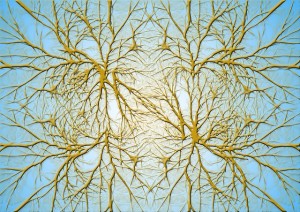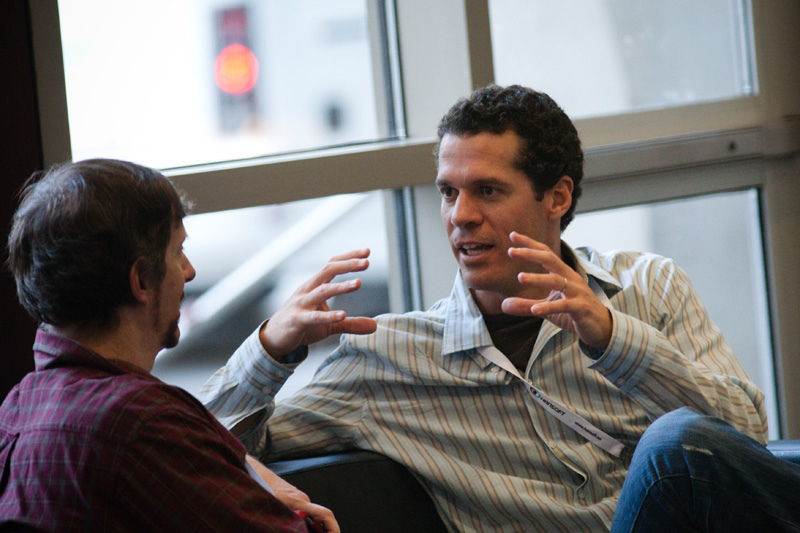By Rowena Kong
Since the discovery of mirror neurons about two decades ago, research into their functions to explain their existence in humans and primates have provided us with an ever richer understanding of their remarkable network system in the brain (Marshall, 2014). The mirror neuron circuitry was first observed in the premotor cortex of the macaques, and subsequently in other frontal and parietal cortical regions, particularly those responsible for perceptual and motor processes. Mirror neurons are essentially motor neurons which fire during both execution and observation of an action. The first researchers to discover this group of neurons termed them mirror neurons based on the discovery that the macaques in their study were observing actions as if they were a reflection of their own in a mirror. Thus, the pioneering discovery was followed by research on imitation and empathy in an effort to piece together the puzzle of these neurons’ existence and function(s) from theoretical and empirical standpoints.
There is certainly a selective social advantage for the function of mirror neurons in facilitating imitation. Iacoboni (2009), in his review of the relationship between imitation, empathy, and mirror neurons, concluded that imitation, as a precondition for empathy, is automatic and effortless. This is a direct pathway through which imitation and imitation learning operate. In other words, we are able to put ourselves in others’ shoes because our actions would correspond with theirs were we faced with similar situations; furthermore, the performance of a physical action necessitates an understanding of the logic behind it. Chartrand and Bargh (1999) showed that the frequency of spontaneous imitation by subjects correlated positively with their empathy scores.
 However, we should consider the possibility that an intermediary implicit mechanism that enhances the empathic response may be involved. After all, a positive association between imitation and empathy may not be indicative of a cause-and-effect relationship. Empathy, as a rather complex encompassment of perceptual, cognitive and emotional processes, does not rely solely on the mirror neuron system but also on other brain regions that affect our appraisal of another’s plight (Corradini & Antonietti, 2013). The fact that research on mirror neurons and empathy has mostly focused on the negative reactions of pain and disgust suggests that the positive aspects of emotion may have been neglected as another measure along the wide spectrum of empathy.
However, we should consider the possibility that an intermediary implicit mechanism that enhances the empathic response may be involved. After all, a positive association between imitation and empathy may not be indicative of a cause-and-effect relationship. Empathy, as a rather complex encompassment of perceptual, cognitive and emotional processes, does not rely solely on the mirror neuron system but also on other brain regions that affect our appraisal of another’s plight (Corradini & Antonietti, 2013). The fact that research on mirror neurons and empathy has mostly focused on the negative reactions of pain and disgust suggests that the positive aspects of emotion may have been neglected as another measure along the wide spectrum of empathy.
Imitation may also take place along a second more complex, unconscious route that similarly leads to engagement in the observed action at a later point in time. The involvement of motor behaviour is again emphasised. Examples of studies which are in line with this argument were conducted by Bargh et al. (1996) and Dijksterhuis et al. (2000). In these studies, participants who were primed with words and questions typically related with the elderly actually acted more ‘elderly’ and performed poorly in memory tasks following the priming.
Another issue highlighted in the review concerning the function of mirror neurons is that perception and action are represented in similar ways in the brain, which explains why they fire during both processes, even at the single-cell level. This also leads to the question of the plasticity and functional versatility of such neurons. Since the regions in our brains devoted to sensory systems can adapt to the processing of alternative representations of stimuli in the event of a deficit in one faculty (as in the case of sensory substitution devices which compensate for a defective sense, e.g. vision, by conversion of visual stimuli information into an auditory format), the potential multifunctional capability of these intriguing members of our neurobiological makeup has yet to be explored (Reich, Maidenbaum, & Amedi, 2012).
References
Bargh, J. A., Chen, M., & Burrows, L. (1996). Automaticity of social behavior: Direct effects of trait construct and stereotype-activation on action. Journal of Personality and Social Psychology, 71, 230–44.
Chartrand, T. L., & Bargh, J. A. (1999). The chameleon effect: The perception-behavior link and social interaction. Journal of Personality and Social Psychology, 76, 893–910.
Corradini, A., & Antonietti, A. (2013). Mirror neurons and their function in cognitively understood empathy. Consciousness and Cognition, 22, 1152-1161.
Dijksterhuis, A., Bargh, J., & Miedema, J. (2000). Of men and mackerels: Attention and automatic behavior. In H. Bless, & J. P. Forgas (Eds.), Subjective experience in social cognition and behavior (pp. 36–51). Philadelphia, PA: Psychology Press.
Iacoboni, M. (2009). Imitation, empathy, and mirror neurons. Annual Review of Psychology, 60, 653-670.
Marshall, J. (2014). Mirror neurons. Proceedings of the National Academy of Sciences , 111, 6531.


 Follow
Follow
Great post! Nice to see science catching up to what we’re experiencing! I’m an Empath, and it helps me establish such strong therapeutic use of myself. I’m an Occupational Therapist who works with students with development delays, and other disabilities along with their families. V. Ramachandran is researching this as well! http://greatergood.berkeley.edu/article/item/do_mirror_neurons_give_empathy